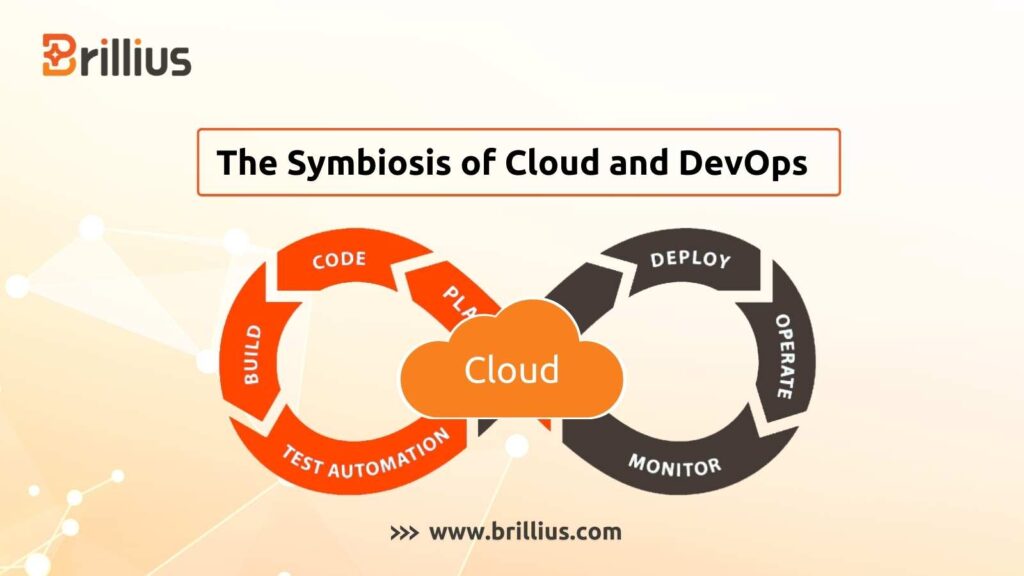
DevOps and Cloud may seem like two far-fetched pieces of technology that never fit together. On the contrary, the two work in tandem.
DevOps empowers developers and operations teams to better manage their time to build, test, and deploy software while simultaneously increasing the quality of each deliverable. It empowers teams to respond in real-time to any queries, updates, or issues.
Cloud computing is about using the internet to deliver computing services including storage, networking, analytics, software, platform, and intelligence. Clearly, DevOps is more about processes whereas Cloud Computing is all about technology, online infrastructure, and the web.
Cloud integration complements the DevOps process by boosting productivity through an application-specific architecture. Simply speaking, DevOps has become a method in which both the Dev and Ops team come together in a platform backed by the cloud. Cloud computing advances DevOps by streamlining it with automation and advanced technology. There are basically three important benefits of this, they are-
- Automation and customizable architecture help reduce error and system maintenance. With no complexity, tasks are simplified and each team member knows their individual responsibility. This helps everything run smoothly until and after the software is deployed. This is a great way to ensure developers can control the environment they are working in. Developers are easily able to experiment, fail or succeed by creating multiple test environments.
- End-to-end secure channel is great for repeatable processes in high-risk environments and great for getting the work done without compromising the security of the network itself. Additionally, the cloud enables you to implement custom validation methodologies or conduct Beta testing after administering the necessary tools to maintain data security.
- Cloud allows the DevOps team to increase operational capacity without any physical effort. It allows easy tracking of resources, You can track individual components associated with each member, developer, test engineer, application, user, data, or, infrastructure, which makes it easier to track the maintenance cost of each one of them. Moreover, with real-time updates and detailed metrics, accessible through cloud implementation, you know where your resources should be directed for process and product improvement.
As the ultimate goal of DevOps lies in improving communication and collaboration to aid process transparency, the real-time metric updates streamline the entire development and deployment cycle.
Cloud enables collaboration without spending time on file transport and review. This way, simultaneous development and testing of software can occur, satisfying the basic concept of DevOps.
It is only through the cloud that teams can functionally coordinate among themselves to deploy software without leaving their physical boundaries. All in all, the cloud is the best way to optimize your DevOps operation.
That’s why cloud service providers are coming up with ways to allow multi-tier architecture for developers to muck around during the initial phase of software development. This multi-tier architecture is an important aspect of the “infrastructure as a code” methodology. One more factor tilting developers towards using cloud solutions is the fact that it is extremely cost-effective. You pay for what you use and not a penny more!
Truth be told, cloud computing is present across verticals, which means the teams are already familiar with the basic concept even before it is implemented in your DevOps cycle. Driving adoption becomes much easier this way.
DevOps emphasizes on the importance of communication and with cloud computing, it is just smooth sailing to adopt an environment of transparency. However, the key to success lies in setting achievable goals and tracking individual metrics along the way.
As long as there is a financial component attached to purchasing software and hardware associated with the development process, DevOps will continue depending upon the cloud to come up with on-demand solutions.
However, it is wrong to assume that the cloud is driving DevOps. On the contrary, the need to further simplify processes has allowed cloud-based technology to scale up.
The old model of developing software and handing it to the operations team to debug it is over. With CloudOps, developers now know how to get new, improved visibility into how their applications operate and are received at the client’s end.
However, the major challenge lies with DevOps being understood and the cloud being adopted to better suit the ever-changing software development.
Want to know more about the topic? Sign up for our blog and keep following this space